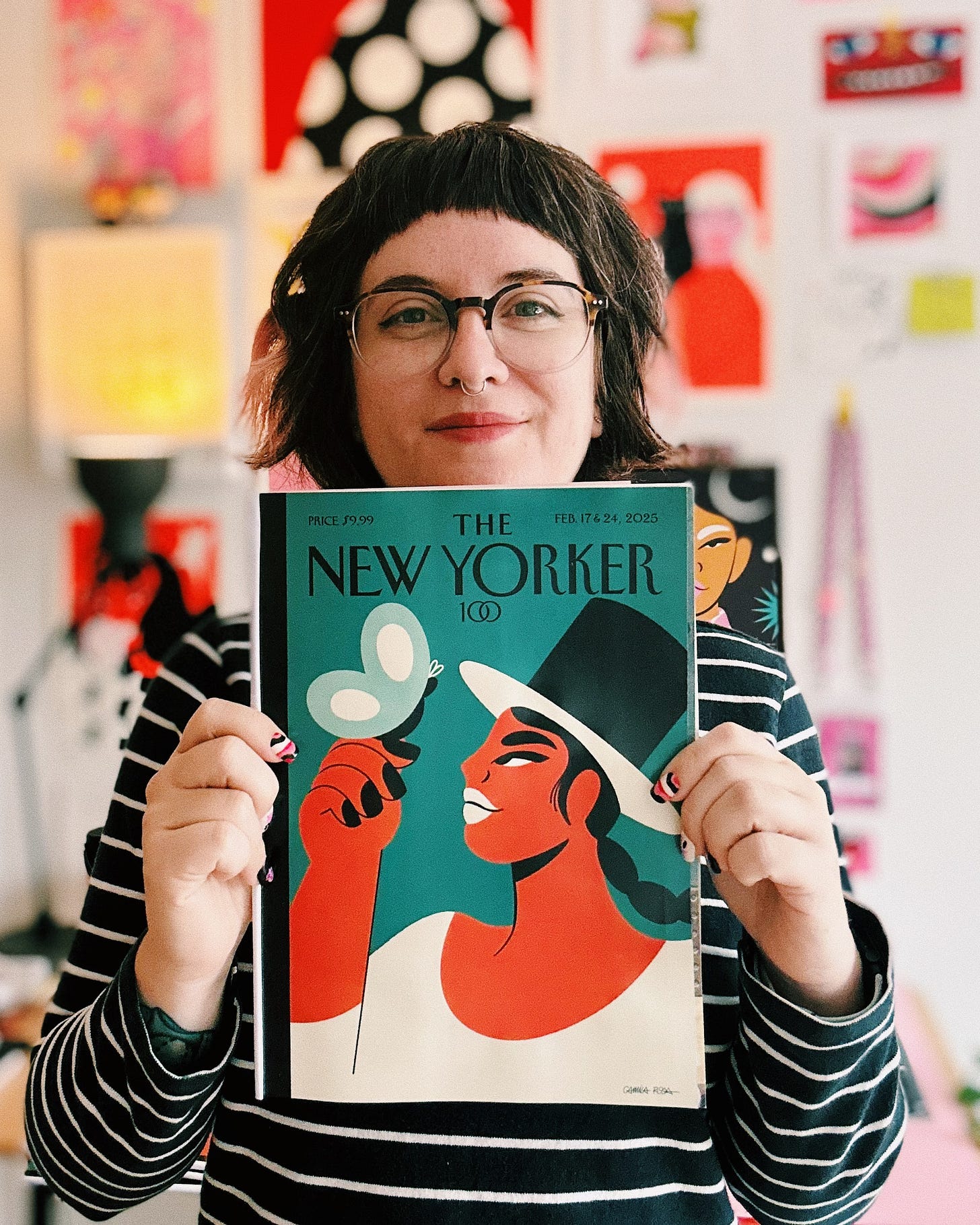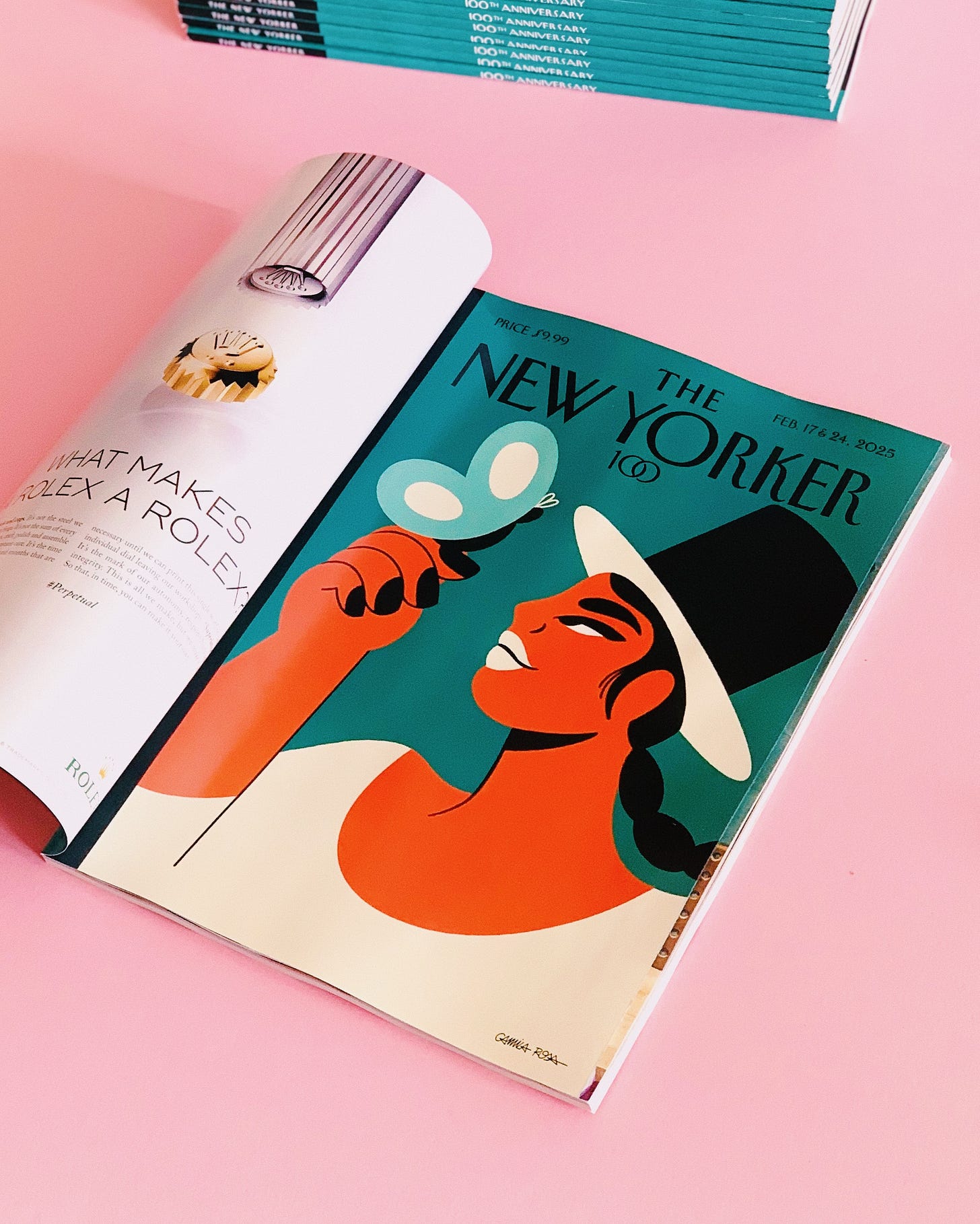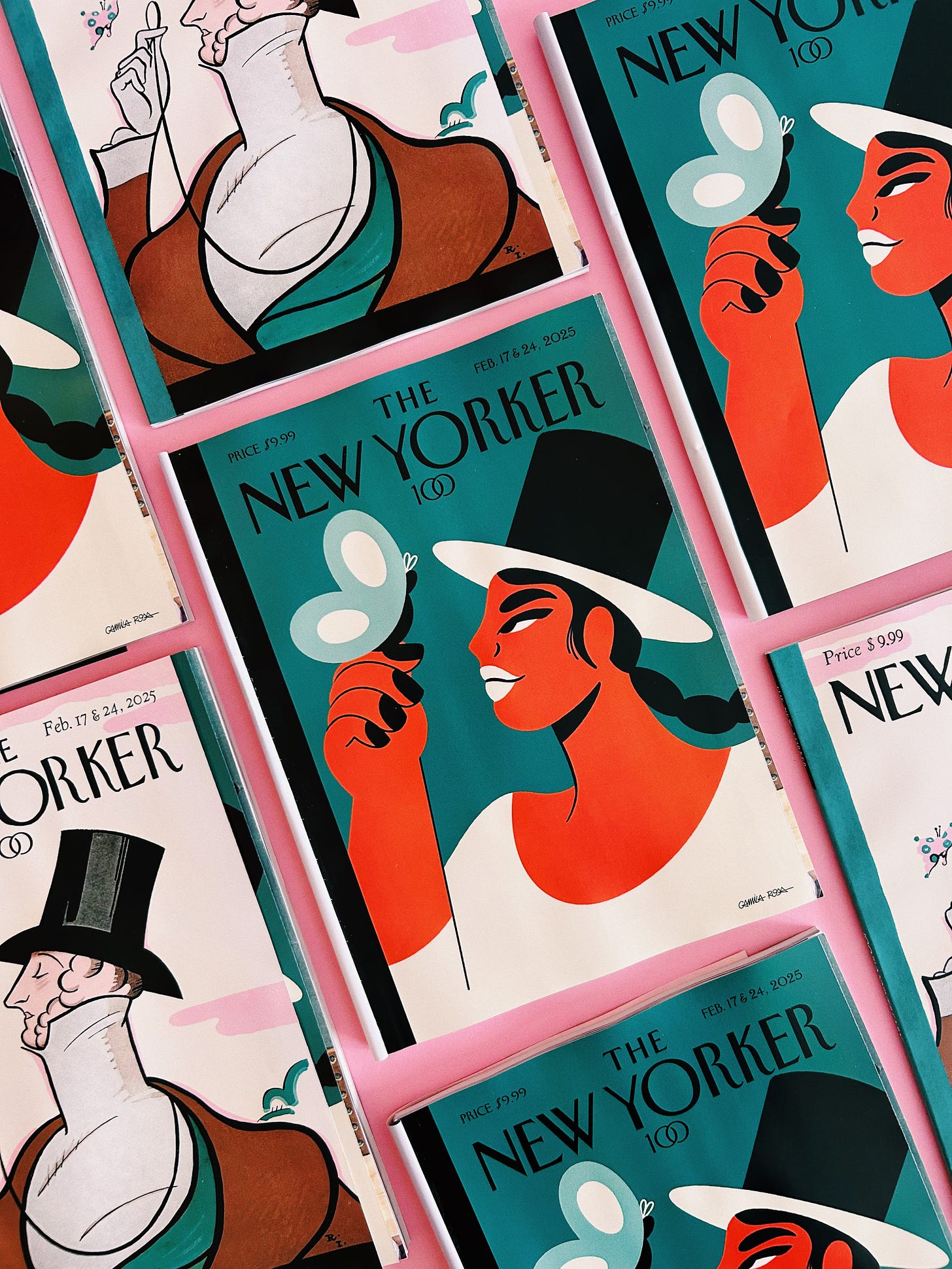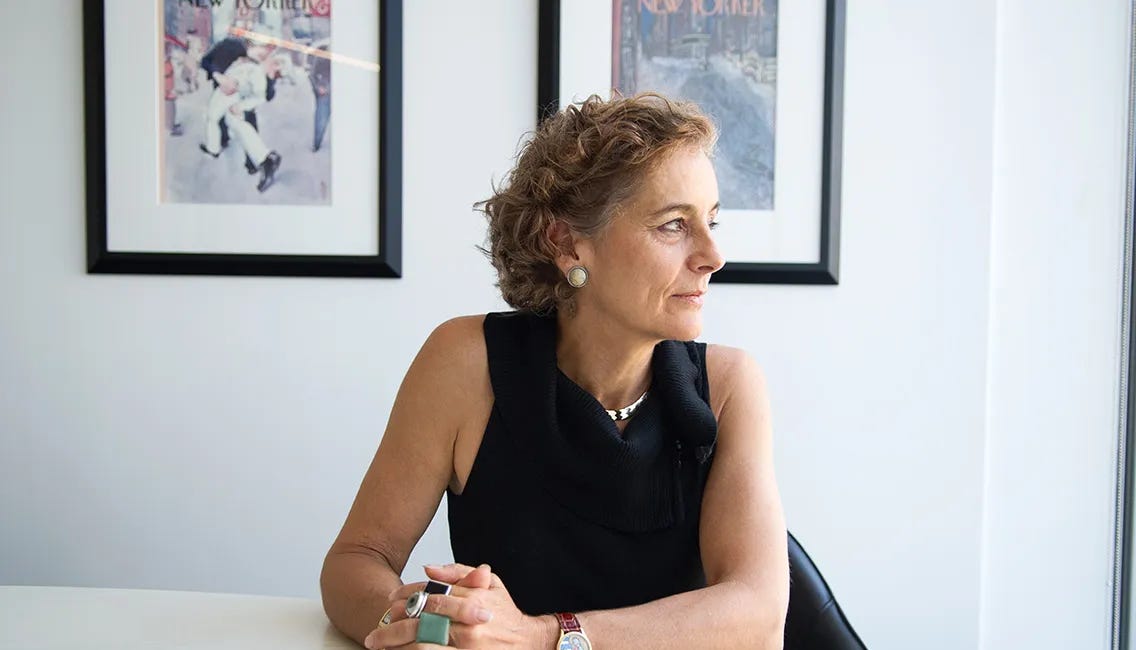#36 – The New Yorker Centenary Cover: A Q&A with Camila Rosa
On the cover for The New Yorker’s centenary, creative process and the message she seeks to convey
This is My Year With The New Yorker Part 4.
Camila Rosa is a Brazilian illustrator and artist based in Brooklyn, New York. Known for her vibrant and dynamic work, she explores themes of feminism, social justice, and diversity, with a strong focus on representing Latin women. Through bright colors, striking compositions, and empowering narratives, her art challenges stereotypes and advocates for inclusivity and equality.
Rosa’s work extends across advertising, editorial, fashion, beauty, and graphic design with collaborations that align with her values. Through murals, digital illustrations, and gallery exhibitions, she uses art as a tool for change and representation. Her work has been featured by brands and publications such as Apple, Adidas, Old Navy, Nike, The New York Times, Vans, and more.
Rosa also created one of six covers for The New Yorker’s centenary issue this year. In this Q&A, Rosa discusses her inspiration for the cover, the creative process behind it, and what message she seeks to convey.

What is the inspiration for the centenary cover you created for The New Yorker?
The inspiration for my cover was Latina women and the deep connection we Latin American people have with nature. I wanted to celebrate diversity and heritage while bringing a fresh perspective to such an iconic moment in the magazine’s history.
Was there a reason behind the removal of the monocle from your interpretation of Eustace Tilley?
I wanted to create a direct, unfiltered connection between Eustace and nature without any lens in between. As a Brazilian artist, I found it important to show how Brazil’s connection to nature is deeply ingrained in our culture, and by removing the monocle, I sought to shift the power dynamic between the observer and the observed. Rather than looking at the butterfly through a lens, my Eustace embraces it openly, reinforcing a sense of unity with the natural world.
What was the creative process like working on the centenary cover?
The process started with a lot of research. I studied past covers, explored how different artists had reimagined Eustace Tilley and reflected on what I could bring that felt true to my style and message. In 2023, I was initially asked to create sketches for The New Yorker’s 98th anniversary cover. Although those sketches weren’t used at that time, the opportunity allowed me to start shaping my vision for Eustace Tilley. Then, in 2025, they invited me to finalize one of those sketches and explore colors which is my favorite part of the process.
How long did it take you to create the cover?
If we consider I did my first sketch for this project in 2023, we can say it took me two years. However, considering only this second approach, it took me one week to finalize the sketch and present some color options.

What is the message you seek to convey through this cover?
I wanted this cover to celebrate diversity and inclusion while honoring the legacy of The New Yorker. It’s about reimagining tradition through a new lens—one that reflects the many voices and cultures that make up New York and the world. I hope people see themselves in this interpretation of Eustace Tilley and feel a sense of belonging.
What is your favorite thing about The New Yorker?
What I love about The New Yorker is how they still use art and illustration as a major part of how they communicate. In a time when so much is being driven by AI, they’ve stayed true to their roots, which feels really bold. It’s a true tribute to art in all its forms, and that’s something I really respect.
PS: I love The New Yorker covers so much that I had to dedicate three posts related to the covers. I’ll be moving to another subject from the next post on.
Interested in learning more about The New Yorker covers? Read my earlier interview with Françoise Mouly, the art editor of The New Yorker.
#34 – The New Yorker Covers: A Conversation with Françoise Mouly
This is My Year With The New Yorker Part 2.






So refreshing to know The New Yorker still opts for sketches and hand-drawn designs instead of using AI. An insightful read!